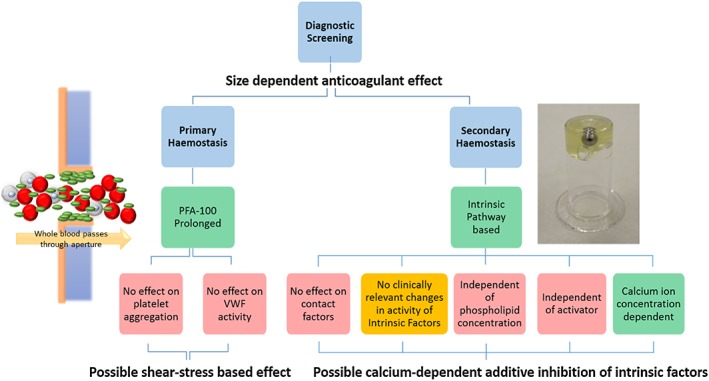Figure 7.

3.2‐nm cadmium telluride quantum dots (CdTe QDs) interact with a number of components involved in haemostasis. In a shear‐based platelet function analyser system, 3.2 nm QDs cause the prolongation in platelet aggregation time. Under static conditions, it was determined that the QDs do not inhibit platelet aggregation or VWF activity. The effect of the QDs was centred on the intrinsic pathway of the coagulation cascade. The anticoagulant properties observed are calcium ion concentration dependent, and activator‐type and phospholipid concentration independent. No effect was observed that may be due to interaction with the contact factors, and the activities of the intrinsic factors were within normal clinical ranges. The observed anticoagulant activities of the QDs may be due to an additive effect of somewhat reduced Factor VIII activity and inhibited coagulation complex formation. Colour coding: Green – confirmed effect; Red – no effect; Yellow – possible effect.
